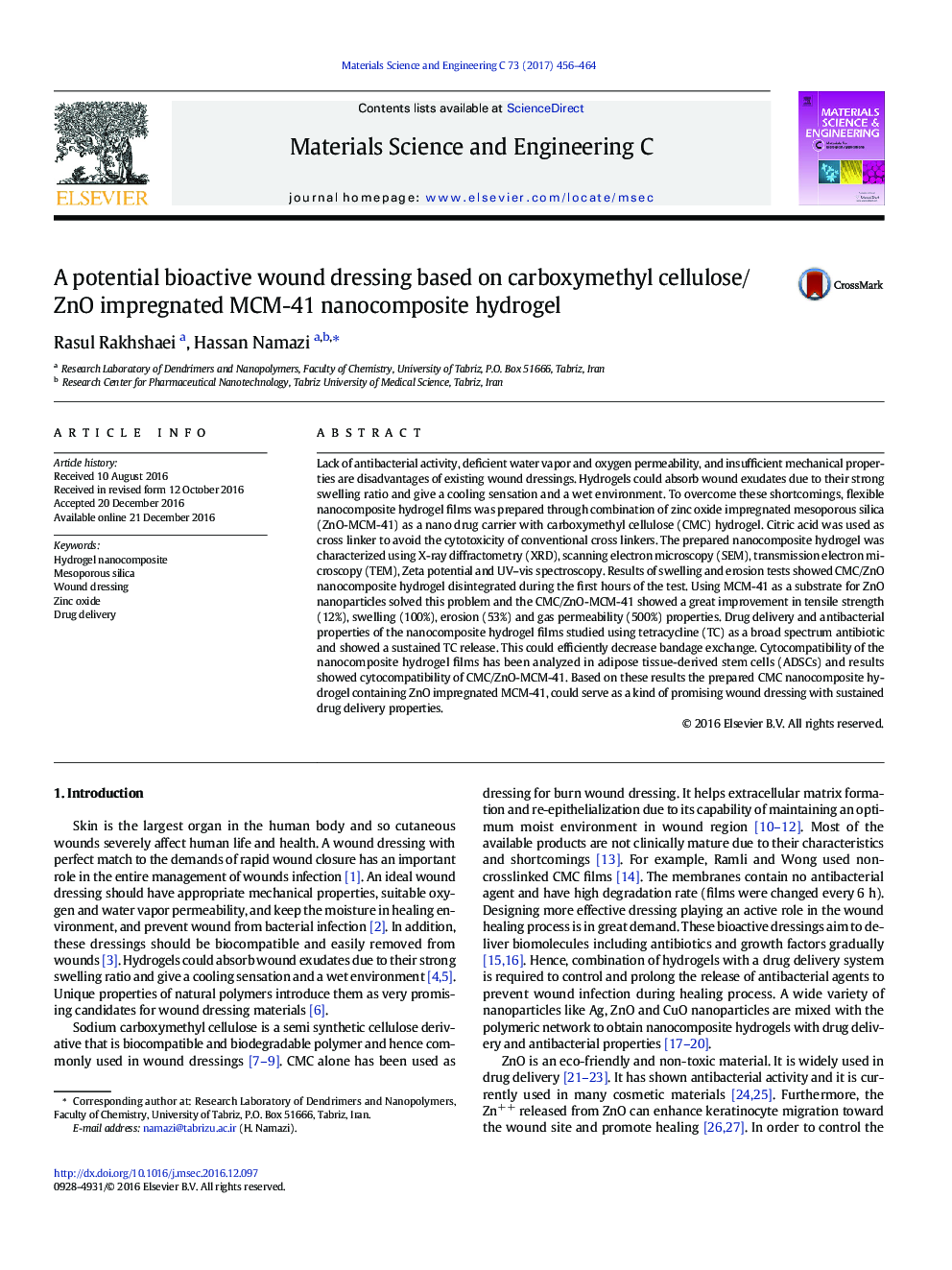| کد مقاله | کد نشریه | سال انتشار | مقاله انگلیسی | نسخه تمام متن |
|---|---|---|---|---|
| 5434950 | 1509148 | 2017 | 9 صفحه PDF | دانلود رایگان |

- CMC nanocomposite hydrogel incorporated with TC loaded ZnO-MCM-41 nanoparticles have been prepared as active wound dressing.
- Citric acid was used as cross linker to avoid conventional toxic crosslinkers.
- CMC/ZnO-MCM-41 films exhibited exceptionally enhanced swelling, erosion and gas permeability.
- The prepared nanoparticles not only donated synergized antibacterial properties but also sustained release of the TC.
Lack of antibacterial activity, deficient water vapor and oxygen permeability, and insufficient mechanical properties are disadvantages of existing wound dressings. Hydrogels could absorb wound exudates due to their strong swelling ratio and give a cooling sensation and a wet environment. To overcome these shortcomings, flexible nanocomposite hydrogel films was prepared through combination of zinc oxide impregnated mesoporous silica (ZnO-MCM-41) as a nano drug carrier with carboxymethyl cellulose (CMC) hydrogel. Citric acid was used as cross linker to avoid the cytotoxicity of conventional cross linkers. The prepared nanocomposite hydrogel was characterized using X-ray diffractometry (XRD), scanning electron microscopy (SEM), transmission electron microscopy (TEM), Zeta potential and UV-vis spectroscopy. Results of swelling and erosion tests showed CMC/ZnO nanocomposite hydrogel disintegrated during the first hours of the test. Using MCM-41 as a substrate for ZnO nanoparticles solved this problem and the CMC/ZnO-MCM-41 showed a great improvement in tensile strength (12%), swelling (100%), erosion (53%) and gas permeability (500%) properties. Drug delivery and antibacterial properties of the nanocomposite hydrogel films studied using tetracycline (TC) as a broad spectrum antibiotic and showed a sustained TC release. This could efficiently decrease bandage exchange. Cytocompatibility of the nanocomposite hydrogel films has been analyzed in adipose tissue-derived stem cells (ADSCs) and results showed cytocompatibility of CMC/ZnO-MCM-41. Based on these results the prepared CMC nanocomposite hydrogel containing ZnO impregnated MCM-41, could serve as a kind of promising wound dressing with sustained drug delivery properties.
194
Journal: Materials Science and Engineering: C - Volume 73, 1 April 2017, Pages 456-464